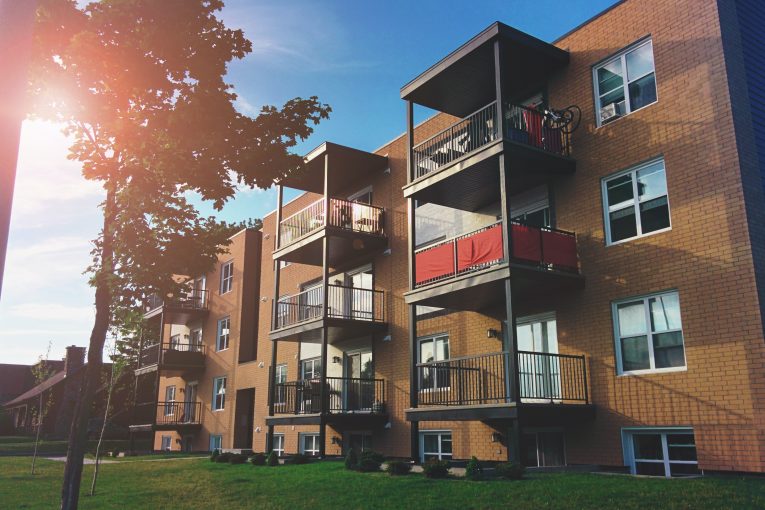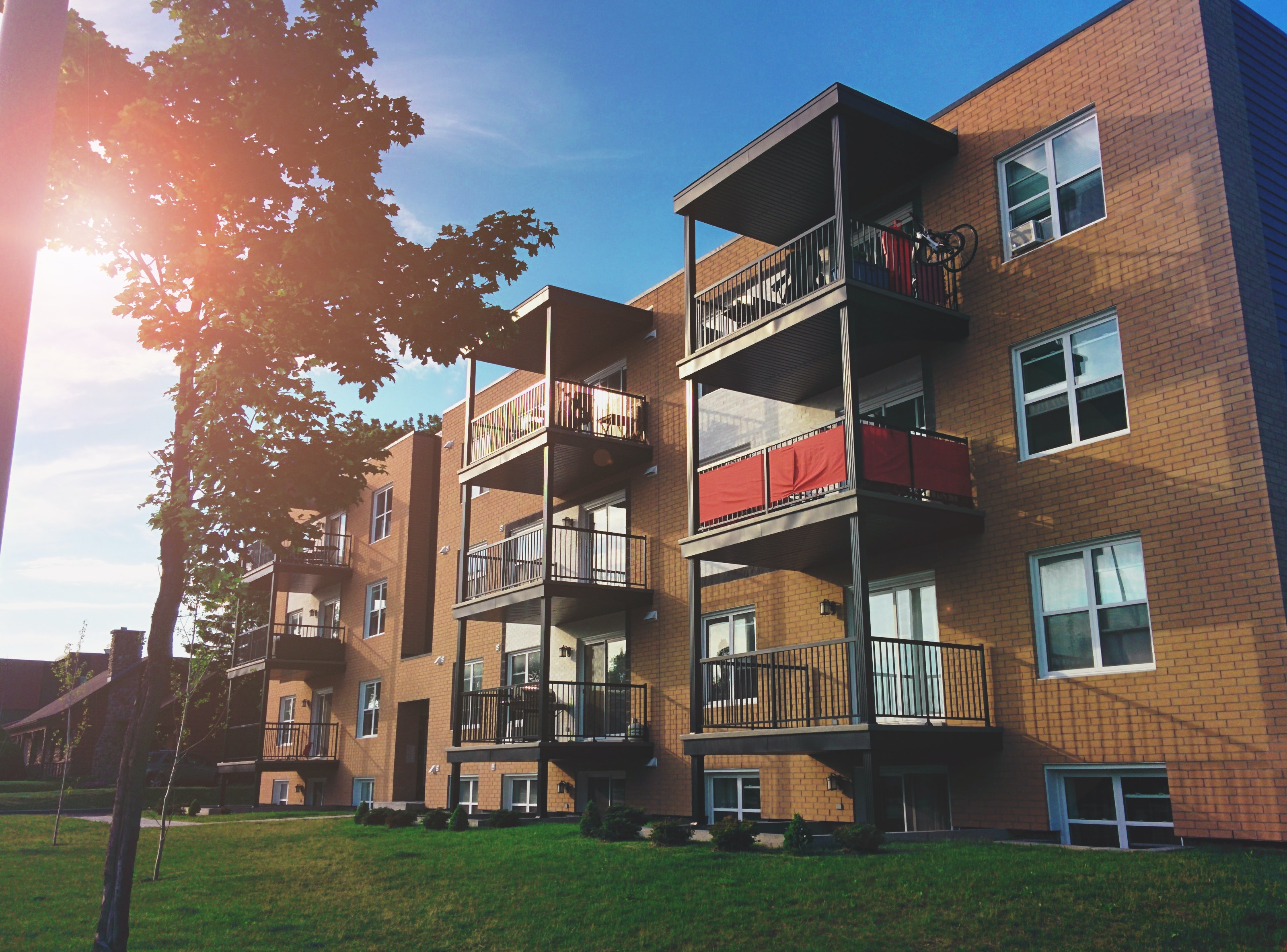

By David M. Greenwald
Executive Editor
I have taken the position that California is likely to fall short of its housing goals – especially on the affordable housing side of the ledger.
In general, I am supportive of the state’s goals for new housing. However, affordable housing in particular is expensive and there is a lot of lot of local resistance. Without RDA or the equivalent, I wonder if we are going to be able to build the housing at the level that is needed to get out of the housing and affordability crisis.
To examine just one problem here, take for instance SB 9 – which was supposed to spur the production of duplexes, which would allow for affordability by design – as opposed to subsidized housing.
Many feared that this law would mean the end to single family neighborhoods.
But as Jason Ward, an economist with the Rand Corporation and associate director of the Rand Center on Housing and Homelessness in Los Angeles wrote in an op-ed in the LA Times last week, “the law that some were convinced would make the sky fall (has instead) barely registered.”
He notes two requirements that “reduce its scope, curbing its ability to boost housing production.”
The first is the requirement that the property be owner-occupied. In short, “the law requires property owners looking to split a lot, the most consequential part of the bill, commit to living on the property for at least three years after approval.”
Second, “one individual cannot invoke SB 9 to split two adjacent lots, even if they own both.”
As Ward explains these restrictions were added late in the process in order to assure lawmakers that SB 9 “benefits homeowners NOT institutional investors.”
But that turns out to be a huge flaw in the system.
We like to disparage developers and home builders, but as Ward notes, who is going to spur housing production? “It is builders, not homeowners (nor institutional investors, for that matter), who are in the business of producing housing.”
We are so concerned that someone might make money off this law, that we made it so that the people who have an incentive to produce large scale duplexes, have no reason to do so.
As Ward notes, “such restrictions effectively rule out any professional builder, large or small, from using SB 9 unless they want to purchase one property at a time and live on it while the lot is split and, at most, three new units of housing are created. This is an unlikely approach to making a feasible living in California.”
In short, our fear of developers and neighbors fear of the destruction of single family neighborhoods, has once again harmed our ability to produce the housing needed to get out of this crisis.
What about the builder’s remedy?
Another controversial law was the builder’s remedy, part of SB 35 passed by Senator Scott Wiener.
It has a sunset date of 2025 unless it is made permanent through the passage of SB 423.
News coverage has termed this the “controversial” state law.
Senator Wiener during a press conference trumpeted the results.
Senator Wiener explained that, according to data from UC Berkeley’s Terner Center, they found that in the first four years the bill was in effect, 18,000 units of housing have either been approved or are in the process of being approved under SB 35, and “three-quarters of those units, are below market rate.
“We are desperately in need of new homes in California. We are short millions of homes,” Senator Wiener said. He added, “SB 35 is a good government measure that will allow us to accelerate home construction. It’s very simple. If you meet all the rules, you meet the zoning and setbacks and designs and everything else, you, you get your permit without a hyper-politicized, chaotic, process that can take years, uh, and lead to litigation because anyone who has an attorney can challenge you.”
California YIMBY CEO Brian Hamlin called SB 35 “one of the most powerful pro-housing laws of modern California history.”
He said, “SB 35 has led to the development of thousands of homes affordable to low income Californians across our state, along with good paying jobs for construction workers, including some of the men and women behind me today. By streamlining the approval of affordable housing, SB 35 makes it faster, cheaper, and easier for low income housing developers to deliver the homes we need in our cities and towns while creating good jobs in our communities.”
Hamlin added, “California needs millions of new homes for people of all incomes, at all stages of life.” He said, “I am confident that when the legislature passes thius bill, and the governor signs it into law, that SB 423 will turbocharge the construction of mixed-income housing, just as SB 35 did for subsidized affordable housing.
SB 35 could be the hammer that forces local communities to pass their Housing Elements. But 18,000 units since 2018 is really not much to write home about.
Seems to me that neither law has really generated the kind of game changing housing that the state actually needs. Part of it is that the cost of housing construction is just really high, part of it is that both laws had a high barrier to entry, and part of it is that we have simply not made it more feasible to build affordable housing.







The builders remedy requirement of 20% Low Income Affordable units appears not feasible in Davis. For a private non subsidized development the profit margins today are too low to be able to pencil in the use of 20% Affordable units. The city’s latest report by Cascadia Partners should be a bit of a guide on what levels of requirements for things like parking, setbacks, and Affordability requirements. If folks are serious about getting housing built, the market factors have to be considered heavily in writing the regulations.
here’s a link to the cited report https://documents.cityofdavis.org/Media/Default/Documents/PDF/CityCouncil/CouncilMeetings/Agendas/2023/2023-01-17/05-Affordable-Housing-Inclusionary-Policy-Presentation.pdf
Don, the problem is that Davis doesn’t need more “unaffordable” $900,000 homes. What it needs is more affordable homes selling for $500,000 or less.
Your comment clearly shows that the Inclusionary Model for both A) producing affordable housing and B) improving housing affordability is completely broken. Our community and our elected leaders should pursue a different approach to achieving both those goals … pursuing Federal andState grants to produce 100% affordable housing.
Further, the fastest way to increase the availability of affordable housing in Davis would be for the State of California to assign a RHNA allocation to UCD, and then enforce the achievement of that metric. UCD adds more housing demand to the Davis community, and probably to all of Yolo County than any other entity or jurisdiction. Yet they are NOT held accountable for that burden they impose on the community. If UCD were to comply with RHNA the number of housing units built in their jurisdiction would increase substantially … and they would be forced to consider changes in enrollment policy that would ensure those built units were occupied. Imagine the increase in affordable housing availability in Davis if UCD students were required to live on campus for two years rather than one.
In closing this reply to you, as a student who has paid a lot of attention to UCD housing, how many Affordable units has UCD built over the recent years? Are 15% of their units Affordable?
Couple of interesting articles from 48 Hills:
https://48hills.org/2023/02/breeds-solution-to-affordable-housing-crisis-require-less-affordable-housing/
https://48hills.org/2015/06/why-market-rate-housing-makes-the-crisis-worse/
For someone with my point of view, I’d probably “welcome” the downtown area of Davis catering to higher-wealth individuals (assuming that housing should be pursued there in mass in the first place). But you can see the problem it creates, above.
Nevermind that there are published studies that directly contradict Tim’s assertions.
Those aren’t Tim’s “assertions”.
Per the article referenced above, it’s from an economic consulting firm (hired by the city itself).
They are his assertions. He’s citing a report from 2015 that has been thoroughly debunked.
Again, he’s citing a report – not putting forth his own “assertions”. Unless you want to say that his citing of it is an “assertion”, itself.
I haven’t read the report myself, nor have I read the supposed “debunktions”.
It certainly makes sense on the face of it. (Though I think one could dig deeper, to determine the underlying cause of wealthier people moving into a given area, who then require more lower/middle wage workers to support that growth.)
The underlying cause is also usually pretty obvious, and is also mentioned in Tim’s articles (e.g., the growth of the tech industry).
And if you dig deeper than that, you’d likely find that the “debunkers” are supported by that same “underlying cause” (moneyed interests, who are more interested in continuing growth rather than affordable housing).
And “coincidentally”, the politicians who support the trickle-down theory (and have openly declared war on communities) are also supported by that same underlying cause. Part of the problem is that voters aren’t really provided much choice, since there’s no way that (even a “developer Democrat”) will lose, in the absence of actual choice.
In the case of San Francisco, I recall that there is one Democratic supervisor who is being targeted by the mayor (since the mayor is also on board with the trickle-down theory). Preston, I think. (I previously posted an article regarding this, as well.)
Please don’t respond to an individual who doesn’t live in Davis (I have proof) and doesn’t have a discernable stake in the debate about Davis’ future. Tim Redmond is a gadfly who has been repeatedly been shown to operate from incorrect information and analysis. (For example, he’s gotten the Hetch Hetchy agreement between SF PUC and Modesto and Turlock IDs wrong.)
Interesting that you’d bring up residency in an article in which Don Gibson commented. As I recall, he was reportedly living in Sacramento while simultaneously appointed to the Davis housing element committee.
Not to mention Don Shor.
I guess calling Tim Redmond a “gadfly” is your idea of an argument.
Where’s the proof that 48 hills’ editor Tim Redmond’s claims have been “thoroughly debunked”? To my knowledge, they’ve never been challenged by the supply side missionaries. Disclosure: I write for 48 hills. Here’s my take on “Supply Sophistry,” posted last April: https://48hills.org/2022/04/suppy-sophistry-how-academics-miss-the-point-on-the-cost-of-urban-housing/
Zelda, It’s not possible to discern from your article what the issues are (and I’m not willing to pay for the journal articles to delve into them myself.) As an economist myself, I’ve seen convincing empirical evidence that the housing price crisis is currently caused by a lack of housing and restrictive local zoning ordinances. For example, you critique the use of indirect evidence to address problems of endogeneity. This is a very common method in economic analysis and the results are likely valid. Unless you’re steeped in econometric methods, a simple dismissal is inadequate.
Here’s a working link to Furman’s 2015 comments. https://obamawhitehouse.archives.gov/sites/default/files/page/files/20151120_barriers_shared_growth_land_use_regulation_and_economic_rents.pdf Furman’s article is deeply referenced.
I also point the perils of trying to extrapolate from the Manhattan real estate market to anywhere else in the U.S. The high density on a geographically constrained location is truly unique and not applicable to anywhere else.
The studies that you critique are far from the only studies showing the effect of regulatory zoning on housing prices. For example, did you do a deeper dive and find articles like this one: https://www.jstor.org/stable/26408189 Both David and I have posted them here in early commentaries. You’re right that supply skepticism will continue to feed local opposition because it’s a convenient myth to believe in for those who want to protect their view of their community from invasion by outsiders. This helps fuel those who want to perpetuate segregation to maintain their personal privileges.
BTW, it’s the height of arrogance on the part of 48 Hills to believe that BEO would bother to reply to an article by a journalist on an obscure website. If you want to engage with them, you will need to publish your critique in a journal.
Dear Richard McCann:
I believe that every link I provided led to an open access file–so no paywalls.
As for a deeper dive: my dive was pretty deep. It was no “simple dismissal.”
You write: “it’s the height of arrogance on the part of 48 hills to believe that [the NYU professors whose essay I debunked] would bother to reply to an article by a journalist on an obscure website.” Really? I’ve engaged three planning scholars at UCLA in a dialogue on 48 hills. I’ve attached my reply to their response to my critique of their work. Anyone who writes about public policy ought to be willing to debate a substantial commentary on the issues at hand. As suggested by your snarky putdown of 48 hills and myself, it’s academics who have contempt for “journalists” per se who are arrogant. What interests me is the quality of the argument, not the number of fancy letters after the author’s name. My name is followed by a few such letters–so what?
Zelda Bronstein, Ph.D.
https://48hills.org/2020/12/the-housing-debate-ucla-professors-are-still-wrong/.
To get to the most important articles, you will need to go through a paywall. They are in subscription-based journals. That is where the most scrutinized peer-reviewed research resides. And again, you haven’t addressed the problem that you are using research focused on the highly unique setting of New York City to extrapolate to the rest of the U.S. Why people who are focused on New York would bother responding to a journalist in San Francisco on that journalist’s forum is beyond me.
Your focus on a single article as though that characterizes all research on the topic is erroneous. All research is built on previous research. There’s not room to put forward all of that research in detail in an article. Substantial research is now coming forward showing the impact of local land use regulation on housing supply. And we only need to look at news reports from other outlets for confirmation. This article from today’s SF Chronicle describes how builders are facing 8-10 year delays in starting construction in several Bay Area locations. https://www.sfchronicle.com/bayarea/article/california-housing-problem-17783816.php If that’s not regulatory impediment, then we need to have a conversation about that definition.
As for 48 Hills, I began following Redmond and the Bay Guardian in the late 1970s when I began attending Berkeley. I’ve long seen that Redmond has drawn numerous incorrect conclusions from the evidence. That continues at 48 Hills. As for journalists in general, too often they go way beyond their expertise and make incorrect statements. I’m constantly sending emails to those who make egregious errors. Some like Sammy Roth at the LA Times know where to stop.
I’m not an academic–I’m a consulting economist who gets his hands dirty in the workings of our world. I find academics too often disconnected from what’s really going on. I have a running debate with energy economists at Berkeley who have never testified in a utility regulatory proceeding and really have no idea of how those cases actually work. My work includes showing that both Rancho Seco and the Klamath River dams could be closed to the benefit of ratepayers.
BTW, a study from 2015 isn’t necessarily “out of date”–David stated that it had been debunked. Ron, get that straight. As for the exodus from SF, they are now moving to places like Yolo County which was the fastest growing county in the state last year, as I pointed out earlier.
David initially mentioned the date, not me. But stating that it has been debunked is totally-meaningless, without comparing each conclusion with whatever you’re referring to.
I don’t recall you pointing that out, but I think you’re right about Yolo county’s growth. Not sure if that was due to students returning after the pandemic, however. (I seem to recall reading the latter, somewhere.)
But if Yolo county (along with all of the other counties in the region) are growing (while “dense” locales such as San Francisco are shrinking), this actually demonstrates a key problem (environmentally, and with the state’s mandates).
In other words, folks are moving to sprawling areas in which their lifestyles are more environmentally-damaging.
Why are you supporting that?
And more importantly, where is the concern from the state and YIMBYs regarding continuing sprawl – despite being in a state which has lost 500,000 residents?
Now, if the state and the YIMBYs discouraged sprawl (while supporting increased density), they might have some credibility. But as it is, they have none. They are comprised of the same type of interests that have been declaring war on communities for decades – nothing new, here.
Where did you move here from?
What neighborhood did you move to? Was it recently built on farmland?
Are you part of the problem?
Yes, yes I am. Indirectly, at least. Though it seems likely that I didn’t create any rugrats myself, doesn’t it?
But I also drive, contribute to greenhouse gasses, traffic jams, etc.
That’s why I also support efforts to maintain a stable population (and not just locally).
I’ll also fight sprawl in the locations in which it (at least) has a chance to be curtailed.
I am glad that the state is losing population, and that the national birthrate has slowed. Millennials are not even having children at a rate that’s sufficient to replace themselves. (Sounds like “my kind of cohort”. Can I be an “honorary member” of it?)
A place where I was priced-out of a long time ago – due to unbridled “economic development”.
And it was already headed down that path some 40 years ago.
Richard: One of your links isn’t working, and the other is from 2015 – the same year that David implied is “too old” to be useful.
But here’s something that’s clearly out-of-date:
Since then, San Francisco has lost more than 6% of its population, due to the pandemic and the ability to telecommute. I believe the same type of phenomenon has been occurring in New York.
I just read (elsewhere) today that California’s population has fallen by 500,000 since April, 2020. You can find that via an Internet search quite easily. This is both substantial and unprecedented.
If you or David are going to challenge/contrast various studies (for the purpose of claiming that one is “right” and the other is “wrong”), I’d suggest a side-by-side comparison of each point made (and how it specifically relates to Davis – assuming that’s your particular interest). Just “claiming” that something is true (based upon your personal “expertise”) isn’t going to cut it with anyone.